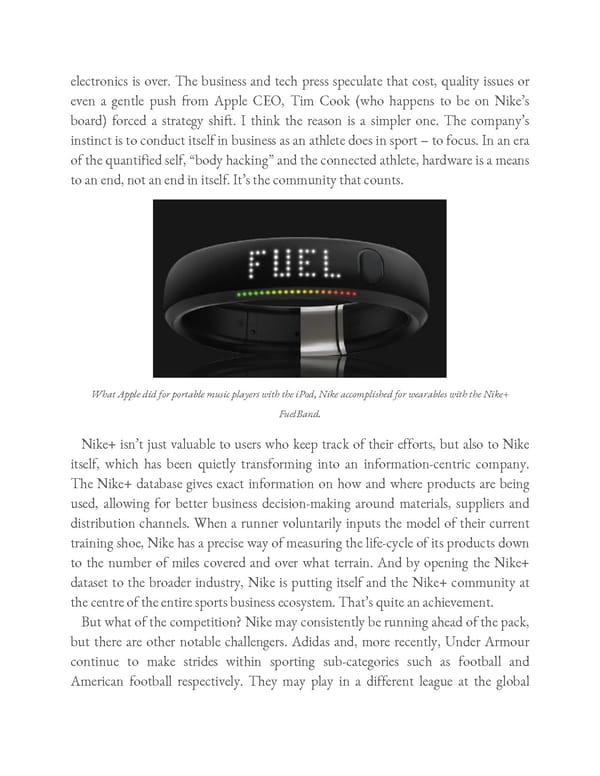electronics is over. The business and tech press speculate that cost, quality issues or even a gentle push from Apple CEO, Tim Cook (who happens to be on Nike’s board) forced a strategy shift. I think the reason is a simpler one. The company’s instinct is to conduct itself in business as an athlete does in sport – to focus. In an era of the quantified self, “body hacking” and the connected athlete, hardware is a means to an end, not an end in itself. It’s the community that counts. What Apple did for portable music players with the iPod, Nike accomplished for wearables with the Nike+ FuelBand. Nike+ isn’t just valuable to users who keep track of their efforts, but also to Nike itself, which has been quietly transforming into an information-centric company. The Nike+ database gives exact information on how and where products are being used, allowing for better business decision-making around materials, suppliers and distribution channels. When a runner voluntarily inputs the model of their current training shoe, Nike has a precise way of measuring the life-cycle of its products down to the number of miles covered and over what terrain. And by opening the Nike+ dataset to the broader industry, Nike is putting itself and the Nike+ community at the centre of the entire sports business ecosystem. That’s quite an achievement. But what of the competition? Nike may consistently be running ahead of the pack, but there are other notable challengers. Adidas and, more recently, Under Armour continue to make strides within sporting sub‑categories such as football and American football respectively. They may play in a different league at the global
 Ogilvy on Advertising in the Digital Age Page 364 Page 366
Ogilvy on Advertising in the Digital Age Page 364 Page 366